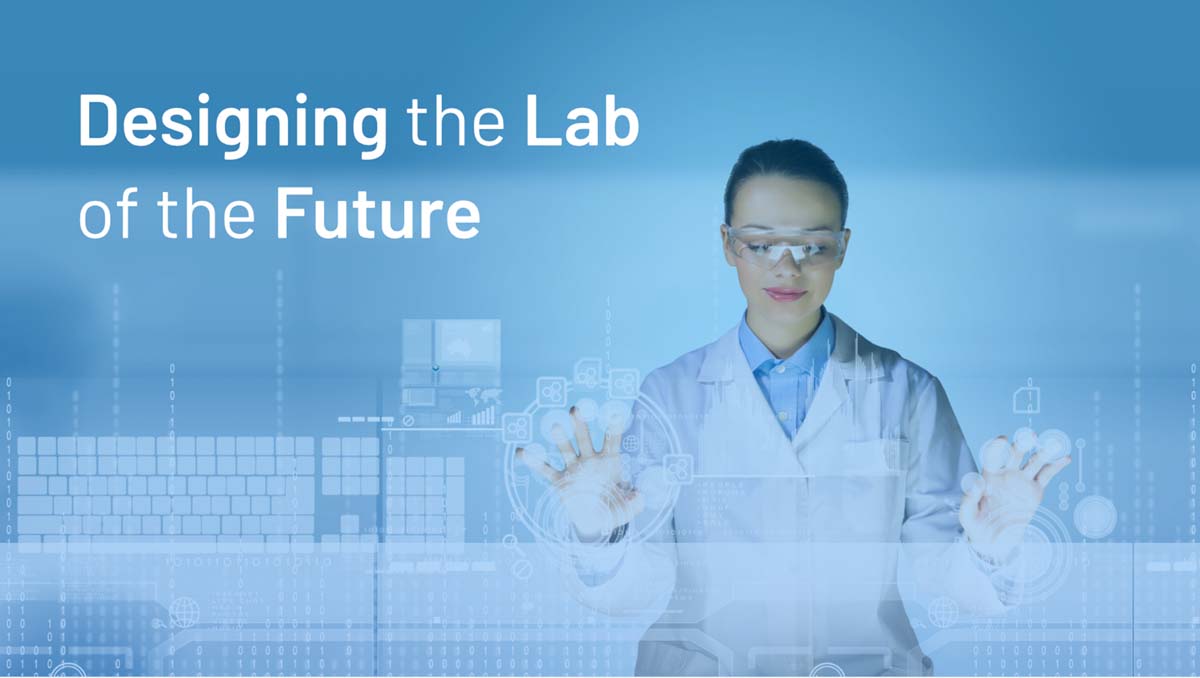The “lab of the future” might look a bit different, depending on who you ask. Some foresee labs of the future as integrated, tech-forward places, while others just want to see more sustainability implemented in lab operations, since labs are huge creators of waste.
Building the lab of the future is more than just bringing in new technology and setting up new facilities. It involves training people and building efficient systems to enhance efficiency and productivity and serves as both a mindset and a physical space for research to thrive.
The foundation for a lab of the future stands on these pillars.
1. Globalization + Diversity
With globalization comes new ideas and innovation. When a diverse team works together with geographical limitations, it brings unique experiences and perspectives to the table to enable a deeper understanding of concepts and theories. Researchers from different areas of expertise collaborate to share ideas and experiences, creating a rich network. A diverse group of researchers has the potential to produce better outcomes and more meaningful research at a more expedited pace.
2. Software Systems
To help create a diverse pool of knowledge, software systems are important components of the lab of the future. Customized software systems can collect and analyze data for different requirements ranging from, but not limited to, inventory management, collaboration, vendor management, lab supply purchasing, and budget allocation.
With the introduction of automation and Artificial Intelligence (AI), software systems can easily take over the manual, menial tasks that usually take up scientists’ valuable time and provide rich data and insights to drive productivity. With the help of AI, human error is eliminated and data can be tracked with accuracy.
3. Digitization of Lab Processes
The growing digital world plays an important role in revolutionizing the way labs work. From identifying vendors to enhancing collaboration between teams, technology can be adopted to improve processes and human relations. Digitization in procurement practices has been a revolutionary change for biotech labs. As the industry moves towards digitized processes, every little detail can be tracked, resulting in a better connection between the planning and the output. You can learn more about digital procurement processes here.
What are the features of a lab of the future?
The lab of the future looks like “less admin work, more science,” according to Lab Manager, meaning technology will play a major role in the future of lab operations. In addition, lab managers of the future will have a more strategic role and greater expectation of being comfortable with software and people management.
1. Lab Sustainability
With the growing focus on the environment, an increasing number of labs are moving towards sustainability. This approach is not just limited to protect the planet, but also to improve lab operations. Incorporating sustainability could be as simple as implementing a smart lighting or thermostat system, to as robust as using more sustainable sources of energy. By making these changes, labs can cut down on their expenses and also reduce their carbon footprint.
Labs of the future will have lab supply recycling programs, training programs for educating staff on making lab supplies last, and energy-efficient infrastructure. Explore our comprehensive guide to Going Green in the Lab to get started.
2. Modern Lab Supply Ordering
The procurement process is one of the most integral aspects of labs of the future. Simplifying lab supply chains, predicting forecasting requirements, and preparing for variations improves lab efficiency and reduces time to research milestones. By adopting digital tools and technologies, labs can forecast supply chain risks and proactively source alternative solutions.
3. Tools for a Connected Lab
The way we work has transformed with the pandemic and will continue to change. According to recent estimates, 35% of employees work remotely, while nearly 30% work using a hybrid or flexible model. With teams not being able to share a common workspace, collaboration is more important than ever.
Here are the best remote collaboration tools that help keep lab teams connected and ensure a smooth lab work process.
4. Digital Lab Operations
The way labs store information is changing from physical to virtual, from files to cloud storage. This shift makes it easier to store and share information, keep track of details, free up physical space, and make the lab more sustainable by eliminating the use of paper files. Most importantly, the documentation process in labs is now seamless, enabling scientists and researchers to focus on actual research rather than manually recording data on paper.
Use these tips for running an efficient biotech lab to learn more opportunities to digitize lab workflows.
5. Modern Lab Environment + Design
As the new generation enters the lab space, their opinions and needs are changing lab designs. Outdated lab designs are a limiting factor while attracting, hiring, and retaining young and bright scientists. Modern workers want happy, comfortable workspaces that encourage creativity, collaboration,and support flexible working. Labs are being redesigned to reflect this transformation, focusing on factors like natural light, proper ventilation, greenery, and positive vibes.
6. Flexible Lab Work
As work-life balance becomes the top priority for researchers and scientists due to a recent incline in overworking and burnout, labs of the future focus on building a culture that’s flexible and collaborative. Syncing research data to the cloud makes it possible to work outside of the lab, be it any environment- home, a coffee shop or even a beach! This flexible environment focuses on enhancing productivity, innovation, and improved work-life balance.
7. Using Business Models for Lab Growth
Scientists are employing business thinking like agile lab management and aligning lab processes around automation and technology. Researchers are using data to make research decisions, much like companies are using Revenue Operations to drive workplace strategy. By creating a supply chain of data linking research from concept to output, labs can rapidly scale and hit research goals.
8. Data-Driven Budget Management
Labs of the future will conduct an in-depth cost analysis to build reasonable budgets and adhere to them, then frequently analyze based on ongoing data. Adhering to budgets helps lab managers analyze the expenditure and cash flow, and operate efficiently using available resources. Use the definitive spend control checklist to identify areas where your lab budget can be optimized starting today.
The journey towards building a lab of the future is complex, but every step taken in the right direction is worth it. With growing technology and changing human needs, a flexible, sustainable, and technologically adept lab is the future.




